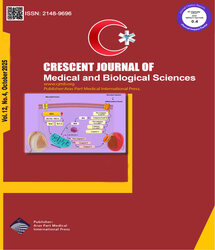

| Original Article | |
| Antibiotic Susceptibility of Aerobic Gram-Negative Bacilli Isolated From Patients Admitted in Intensive Care Units of Sina Hospital, Tabriz, Iran | |
| Shahrokh Hagi Saghati1, Haedeh Mobaiyen2, Zhinous Bayatmakoo3 | |
| 1Collage of Medicine, Tabriz Branch, Islamic Azad University, Tabriz, Iran 2Department of Microbiology, College of Medicine, Tabriz Branch, Islamic Azad University, Tabriz, Iran 3Infections and Tropical Diseases Research Center, Tabriz University of Medical Sciences, Tabriz, Iran, Department of Infectious Disease, Faculty of Medicine, Tabriz University of Medical Sciences, Tabriz, Iran |
|
|
CJMB 2015; 2: 071-075 Viewed : 5288 times Downloaded : 6283 times. Keywords : Gram-negative aerobic bacteria, Drug resistance, Intensive care units |
|
| Full Text(PDF) | Related Articles | |
| Abstract | |
Objective: Due to critical clinical situation and use of mechanical devices, managements including antibiotics and contact with hospital environment and healthcare workers, patients in intensive care units (ICUs) are susceptible to various infections, particularly those arising from aerobic gram-negative bacilli with multi-drug resistance. Knowledge of the pattern of antibiotics susceptibility and their empirical therapy helps prevent and reduce morbidity and mortality of infectious disease in ICU. Materials and Methods: In this retrospective study, the medical records of all patients admitted to ICUs of Sina hospital of Tabriz from 2011 to 2015 were evaluated, and the information was extracted from questionnaires and statistically analyzed with SPSS 16. Results: Among a total of 332 patients, 101 (30.42%) had nosocomial infection with gram-negative bacilli and Escherichia coli (E. coli) had the highest prevalence (35.6%). Urinary tract infection (UTI) (76.23%), pneumonia (18.81%), and septicemia (4.9%) were the most frequent nosocomial infections. Forty-one patients (12.3%) had positive cultures for gram-positive and fungal infections. Additionally, 46.53% of patients were female, and no significant difference existed between the gender quality variable and the isolated aerobic gram-negative bacilli (P > .005). The highest antibiotic resistance was against ampicillin, amikacin and piperacillin and the highest sensitivity was to imipenem. Conclusion: Urinary tract and respiratory tract infections were the first and second common source of infection in ICU and E. coli as an aerobic gram-negative bacillus was the most important etiologic agent. The highest antibiotic susceptibility was to imipenem. |
Cite By, Google Scholar
Online Submission System
 CJMB ENDNOTE ® Style
CJMB ENDNOTE ® Style
 Tutorials
Tutorials
 Publication Charge
Medical and Biological Research Center
About Journal
Publication Charge
Medical and Biological Research Center
About Journal
Aras Part Medical International Press Editor-in-Chief
Arash Khaki
Deputy Editor
Zafer Akan

















